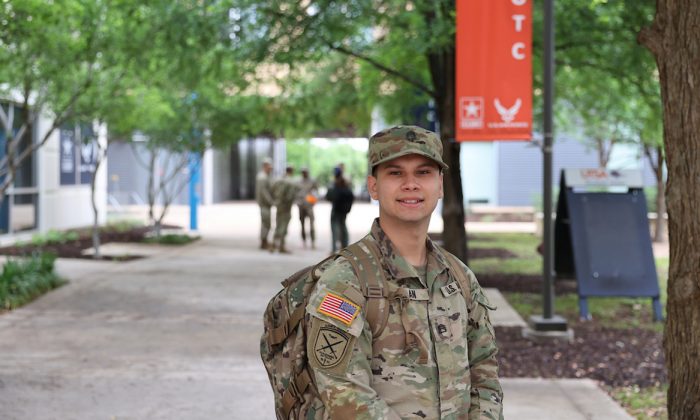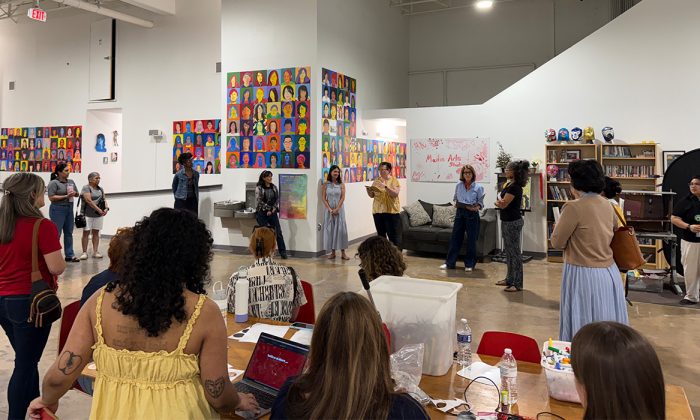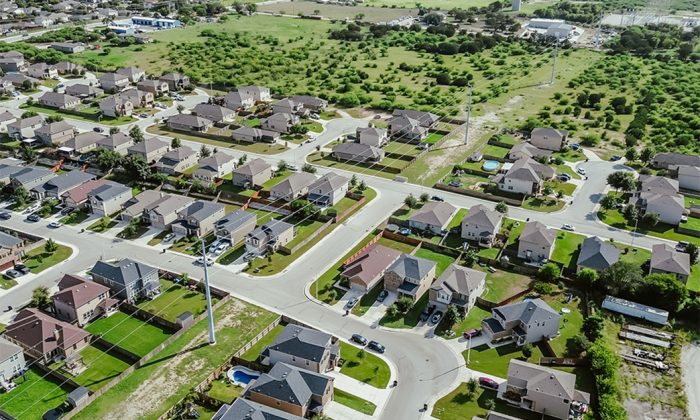The University of Texas at San Antonio has secured federal funding for a new research hub dedicated to studying Alzheimer’s disease and related dementias, propelling the university into the ranks of leading research institutions in the United States.
Funded through a highly competitive grant program from the National Institute on Aging, the research hub is known as the San Antonio Center for Alzheimer’s Disease and Related Dementias (AD/ADRD) Population Aging and Social Studies (CAPAS).
The center will bring together experts in demography, neuropsychology, biology, economics and public health across UT San Antonio’s campuses, including its Health Science Center and affiliated institutes such as the Biggs Institute for Alzheimer’s and Neurodegenerative Diseases, the Barshop Institute for Longevity and Aging Studies and the Brain Health Consortium.
Researchers will use social sciences, neuropsychology, biology, public health communication and bilingual community outreach to investigate and communicate their findings on how aging and dementia affect South Texas communities where many populations face higher dementia rates yet remain underrepresented in research.
CAPAS will be led by Rebeca Wong, PhD, and Fernando Riosmena, PhD.
Wong is a professor in the Department of Population Health Sciences at UT San Antonio’s Long School of Medicine, co-director of CAPAS and director of the Center for Healthy Population Aging.
Riosmena is professor in the UT San Antonio College for Health, Community and Policy and director of the Institute for Health Disparities Research.

The recent merger of UTSA and UT Health Science Center San Antonio, forming The University of Texas at San Antonio, created an opportunity to bring biomedical science and social science together, facilitating collaboration, Wong said. “By combining our strengths, we can address Alzheimer’s disease from every angle — from molecules and biomarkers to families, neighborhoods and communities.”
The center is a true example of how the strengths of two institutions can multiply when they work together, Riosmena said.
“UT San Antonio’s Health Science Center scientists bring world-class clinical and biomedical expertise, while our academic campus contributes deep knowledge in demography, social science and population health,” he said. “Together, we’re building something that neither of us could accomplish alone.”
Organized around three cores — development, communication and dissemination and administration— the center will recruit scientists, provide outreach to organizations like Salud America!, and provide leadership and training.
Research at the center also will build upon population-based studies, including several local and regional research projects focused on the many aspects of Alzheimer’s and aging.
In addition, CAPAS is connected to other infrastructure funded by the National Institute on Aging already in place, including the San Antonio Claude D. Pepper Center, the Nathan Shock Center, the South Texas Alzheimer’s Disease Research Center and the Texas Resource Center for Minority Aging Research.
Together, these resources position San Antonio as a leader in advancing knowledge about dementia at the population level.
Research powerhouse
When Wong and Riosmena applied for funding, only 15 centers nationwide focused on the demography of aging, with only three specializing in Alzheimer’s research. Most are housed at elite institutions such as UC Berkeley, UCLA, the University of Southern California and Johns Hopkins University.
UT San Antonio now joins that circle, underscoring its rapid rise as a research powerhouse.
Hispanic people are the fastest-growing group of older adults in the U.S., according to the National Institutes of Health. They live longer than non-Hispanic whites, but face earlier onset of chronic diseases, including Alzheimer’s, which leads to longer periods of cognitive impairment and greater caregiving burdens.
“We are well-positioned to lead this research,” Riosmena said. “Latinos experience earlier cognitive aging than other populations and earlier development of dementias. San Antonio and South Texas are at the heart of this challenge.”
A defining feature of CAPAS will be its population-level, life-course approach to dementia and aging research.
“Population-level research allows us to prioritize representation,” Wong said. “If we find that Alzheimer’s onset occurs earlier in some populations than in others, we can be confident that the finding reflects the larger population, not just a small, select clinical sample,” Wong said.
The center will examine how an individual’s birthplace, education and work history, occupational and neighborhood exposures, and other factors may influence their health over time.
“Much of the science on Alzheimer’s is clinical,” Wong said. “We need to study the life course of the disease to determine how the patient arrived at this point.”
Researchers will investigate how life experiences — from poverty and migration history to family networks and caregiving — shape the course of Alzheimer’s among Latino populations.
“When you study Alzheimer’s from a social science perspective, you ask questions like, who do they live with, do they experience loneliness, do they exercise?” Wong said. “We won’t be able to delay Alzheimer’s if we don’t understand people’s ability to engage with others and with their community.”
By integrating these perspectives with biological and neuropsychological research, the center aims to provide a fuller picture of prevention, treatment and healthy aging.
Dismantling silos
The data on Alzheimer’s and dementia also highlight gaps in knowledge that CAPAS seeks to fill. The rate of diabetes and cardiovascular disease is high among Latino populations, but migration history, socioeconomic status, neighborhood conditions and intergenerational poverty remain far less studied.
By blending sociology, demography and economics with neuropsychology and biology, CAPAS aims to create a holistic picture of how Alzheimer’s develops and how it can be prevented.
The center will work to improve access to longitudinal data, making it easier for researchers to study Latino aging and Alzheimer’s. “The more data we make available, the more progress we’ll see in real outcomes for families,” Wong said.
Another challenge in this type of research has been data distribution.
Population scientists often work with large national surveys but rarely collaborate with neuropsychologists or clinicians, and researchers who collect clinical data often lack samples of Latino populations or connections to social science expertise.
CAPAS intends to dismantle those silos by funding pilot projects and mentoring early-career faculty, while expanding bilingual communications to ensure findings reach scientists and community members.
Four pilot studies and one innovation project will begin this year.
Leading those studies are Amy Werry-McFarlin, PhD, assistant clinical neuropsychology professor in the Department of Neurology at the Long School of Medicine; Stephanie Santiago-Mejias, PhD, assistant professor of clinical neuropsychology with the Biggs Institute; Gregory Orewa, PhD, assistant professor of public health at UT San Antonio; Xi Mao, PhD, assistant professor of economics at The University of Texas Rio Grande Valley; and from the Biggs Institute, Claudia Satizabal, PhD, associate professor of population health sciences at the Long School of Medicine, and Tiffany Kautz, PhD, assistant professor.
Bilingual outreach
CAPAS embodies the university’s commitment to advancing knowledge through teaching and learning, scientific innovation, patient care and community engagement.
By combining demographic and social studies with community-focused research, the center will ensure that the future of Alzheimer’s studies will include, and be shaped by, the populations most affected.
With high rates of diabetes and cancer, San Antonio has been the focus of much research on those diseases while dementia research has often lagged. But outreach will be key.
“We thought this would be a good opportunity for demography centers to be more involved in community communication,” Riosmena said. “There are amazing studies happening here, but not enough of that knowledge reaches families in ways they can use.”
By embedding bilingual outreach into its core mission, the center will help families understand risk factors, prevention strategies and caregiving resources. It will also ensure community voices shape future research priorities.
“The population perspective in this case is important, because sometimes reducing things to numbers can feel impersonal,” Riosmena said. “I would like to flip that and say, ‘Look, these stories all matter.’ And more importantly, knowing that these stories are not unique, that they happen over and over again, systematically to people in a way that relates to their background or social conditions.”
Long term, CAPAS researchers aim to increase participation in clinical trials and advance understanding of the many differences among people in this population.



